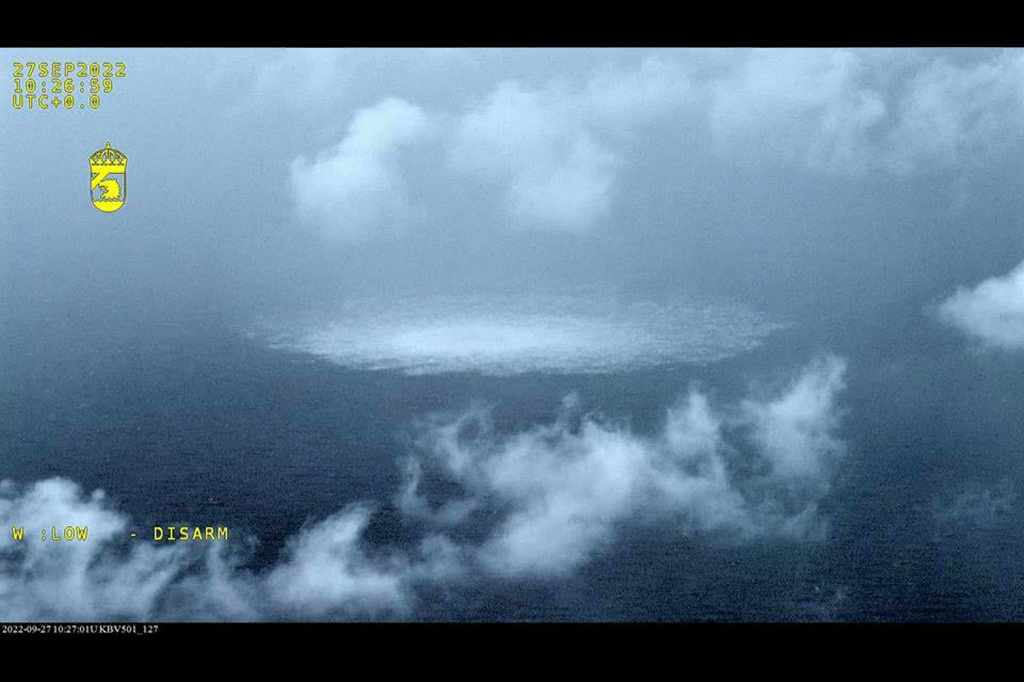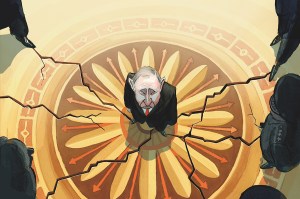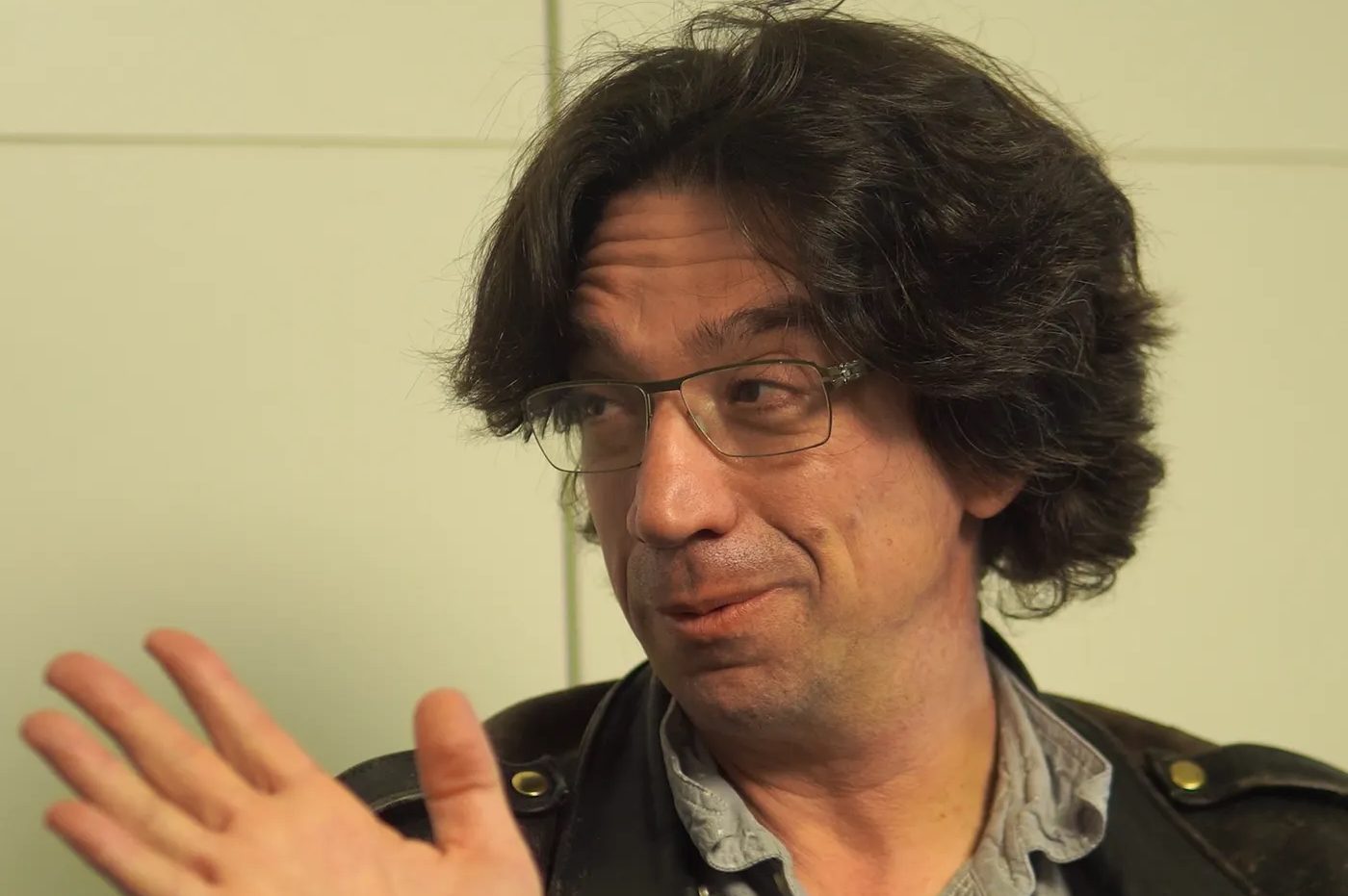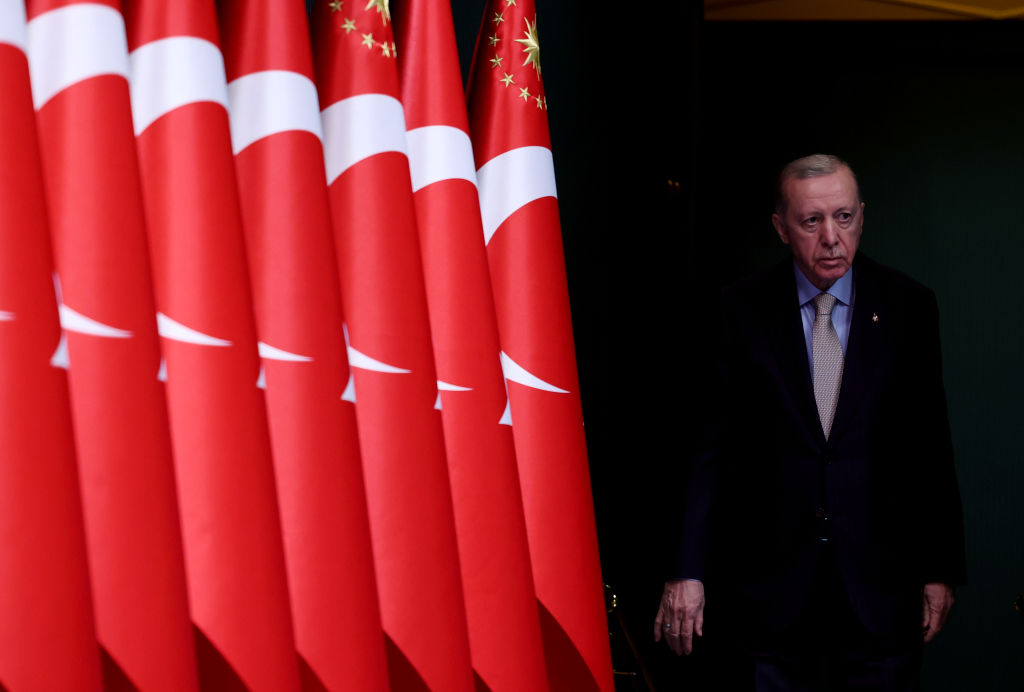Vladimir Putin has his story, and he’s sticking to it: the destruction of three of the four Gazprom-owned Nord Stream pipelines on September 26, 2022 was the work of the American government. Speaking to reporters in Siberia last week, Putin insisted that the Nord Stream attacks had been carried out on a “state level” and dismissed as “sheer nonsense” a slew of recent stories pointing the finger at a group of freelance Ukrainian-backed divers operating off a small hired yacht.
But reported facts have been stacking up against Putin’s version of events. Earlier this month, the New York Times published a detailed investigation that suggested that the blasts were, in fact, carried out by a handful of freelance divers using commercial explosives and backed by a shadowy Ukrainian individual apparently unconnected to the Zelensky government.
Over the following weeks, a slew of German media outlets including Germany’s ARD and SWR TV stations, Contrast and Spiegel magazines, Die Welt and Die Zeit have added key pieces of the story — mostly concerning the yacht Andromeda, allegedly used for the attacks, which was found to contain traces of explosives when searched by German police in January. An online community set up by open-source intelligence (OSINT) organization Bellingcat quickly unearthed video footage of the Andromeda docking in various Baltic marinas around the time of the attack. Most importantly, Germany’s prosecutor’s office last week confirmed reports that they had indeed been investigating at least six suspects who boarded the yacht using fake passports in connection to the Nord Stream attacks, as well as the paper trail behind the yacht’s hire.
Investigators in Germany, Sweden and Denmark had strong, concrete leads on who carried out the attacks within days of the blasts. Just a week after the pipeline attack, staff at a Scandinavian delegation in Brussels were “impressed by the level of detail” of a confidential intelligence briefing on the blasts they received at their Embassy, the Times (of London) reported last week. For a large number of Western intelligence professionals, and a smaller number of editors and journalists (including myself), the story of Ukrainian involvement has been an open secret for months. Yet the joint Swedish-Danish investigation has so far said only that the attacks were an “act of sabotage” — and since then have been officially silent.
The details of the investigation were kept, not only from the public, but from US and EU parliamentarians and from the United Nations for a simple reason: the news that Ukrainians were involved in an attack on Germany’s critical infrastructure could have a devastating impact on Kyiv’s relations with its major European supporters. As one senior UK intelligence official told me in January, “the story will come out sooner or later…but we’re not going to be the ones to leak it.”
The first official decision not to reveal the results of ongoing enquiries seems to have been taken by Germany’s security service, the BND, in early October. In a response to a parliamentary written question on whether Ukraine might attack Russian infrastructure, the federal government replied that it had “come to the conclusion that a disclosure of information regarding this question cannot be issued — even in classified form — due to considerations regarding the welfare of the state.” Several similar requests concerning the Nord Stream attacks from parties across the German political spectrum were also rebuffed.
“Do you think that a terrorist attack like this, in international waters, in a sea that is observed by many different surveillance systems, that this could happen without anybody taking notice?” complained Dr. Ralf Stegner, a member of the governing Social Democrats and chair of the Bundestag’s Committee of Inquiry and the Subcommittee on Disarmament, Arms Control and Nonproliferation in December. “That’s hard to believe. It wasn’t an attack on Mars, it was in the Baltic Sea.”
As has now been revealed by Die Zeit, Der Spiegel and the Danish newspaper Ekstra Bladet, the German and Danish authorities were very much taking notice. On September 6, last year, the 15.57-meter, eleven-berth German-flagged Bavaria Cruiser 50 motor yacht Andromeda set sail from the Hohe Düne marina in the Baltic port of Rostock. She had been hired from Mola Yachting GmbH for 2998 euros (£2,600) a week by a Polish company owned by two Ukrainians. At least six passengers were on board — all of whom were carrying forged passports, one of them Bulgarian. The yacht was not, because of its size, required to carry an AIS (Automatic Identification System) — but OSINT sleuths combed through marina security camera footage and docking records and found the Andromeda at Christianso and Wiek on the island of Rügen on the days before and after the explosions. Last Wednesday the German public prosecutor’s office confirmed that the vessel had been searched between January 18 and 20 over “suspicions it could have been used to transport explosive devices that exploded on 26 September 26, 2022” and traces of explosives had been found aboard.
By late January, soon after the search of the Andromeda, several Western journalists were aware of the story. That was when I personally heard the first details from a correspondent colleague – that the attacks were a freelance Ukrainian operation undertaken by a small group of professional demolition divers using a German-flagged small boat with its transponder off; that the operation was put together quickly for a “low six-figure sum”; that the CIA were deeply angered by the attack; and that the Ukrainian government did not sanction the operation.
Over the following two months, I was able to confirm those basic details of the attack with a senior serving British intelligence executive, a former head of Germany’s BND security service and a top advisor to a leading EU head of state. But the fact that many apparently well-informed people repeat or confirm a rumor does not prove it’s not a rumor. A story as explosive as this needed to be supported by hard, independently verified facts, not merely based on anonymous spooks’ hearsay.
Which brings us to Seymour Hersh. On February 8, the eighty-five-year-old Hersh — once one of the US’s leading investigative reporters, who revealed the US Army’s massacre of Vietnamese civilians at My Lai and played a key role in the publication of the Pentagon Papers on the US’s involvement in Vietnam — published a detailed post on the Nord Stream attacks on Substack. Citing a single anonymous security source, Hersh draws a minutely detailed picture of how the attack was allegedly carried out by divers from the US Navy’s Diving and Salvage Center in Panama City, Florida, operating out of US bases in Norway. The explosives were laid, Hersh claimed, under the cover of NATO’s BALTOPS-22 naval exercise in the Baltic in June 2022 and detonated three months later by radio signals from US P8 Poseidon patrol planes. He also claimed that the attack was personally authorized by President Biden — citing Biden’s statement at a February 7 news conference with German chancellor Olaf Scholtz when he threatened that “If Russia invades…there will be no longer a Nord Stream 2. We will bring an end to it” as his main evidence.
Hersh’s story soon unraveled under close scrutiny — not least the information that no P8 planes had overflown the explosion site in the hours or days before the detonations and the absence of any US base in Norway. Among its many improbabilities was the presumption that several hundred people from the White House, down through the CIA to the US Navy and the Norwegians, had maintained strict silence about their roles in a terrorist strike on the critical infrastructure of a close NATO ally. Modern governments and militaries are not good at keeping omertà, much as they occasionally wish to. But Hersh’s version of events found an eager audience on Russian state TV, which had long maintained that the Nord Stream attacks were the work of the US and British navies.
My own reporting, meanwhile, suggested that the simpler explanation of a small group of divers acting independently was at least technically plausible. According to Terrance Long, founder of the International Dialogue on Underwater Munitions (IDUM), 70-80 meters is easily within the diving depth of independent frogmen in wetsuits using special oxygen-nitrogen mixes and taking due time to surface. Though spectacular in terms of damage and strategic impact, in terms of a professional diving job the destruction of Nord Stream would not be a challenge. Worldwide there are many hundreds of trained “clearance” divers who specialize in the removal of abandoned munitions and other hazards, says Long, who has done extensive research on munitions dumped in the Baltic after World War Two.
The more controversial question was how much explosive would be required to do the job. In mid-October, the Blueye Robotics company, commissioned by the Swedish newspaper Expressen, easily located the damaged pipes (incidentally demonstrating that finding Nord Stream does not require particularly sophisticated resources) and made an underwater video of the damage. Pipeline sections up to 200 feet long had been blown to pieces, with debris found up to 800 feet away. A source quoted by the the Times estimated that up to 500 kilos of explosive would be necessary — far more than a small yacht like the Andromeda could feasibly carry. OSINT blogger Oliver Alexander suggested one answer. According to the ship-tracking site MarineTraffic, a Greek-flagged crude oil carrier named Minerva Julie criss-crossed the area around the Nord Stream 1 explosion sites at least eight times between September 5 and 13 — the exact same time as the Andromeda would have been in the area — and could have carried the explosives.
But Terrance Long suggests a far simpler explanation. Though apparently spectacular, Long estimated that the explosive force required would be in the order of “tens of kilos… that damage would be consistent with linear charges set along the pipeline.” The thickness of the steel used in Nord Stream’s final and thinnest section was 26.8mm encased in 300mm of concrete. That’s ten times thinner than the 280mm armor on a Russian T-72 tank, which, as dozens of videos have shown, can easily be penetrated by a Javelin missile warhead weighing just 8.4 kilos. Furthermore, though Nord Stream 2 was not yet operational and Nord Stream 1 was pumping just a fraction of its full capacity at the time of the explosions, all four pipelines were filled with pressurized gas pumped in at up to 220 times atmospheric pressure. The enormous pressure of the gas inside the pipe would, when ruptured, have propelled debris far further than the explosion itself.
The mystery may soon be solved, as Gazprom reported that its underwater drones had located a possible set of unexploded charges near the still-intact second pipeline of Nord Stream 2 and reported the suspicious object to Danish authorities. Danish foreign minister Lars Løkke Rasmussen today acknowledged that a “device” had been found, but said that “the assessment from our authorities is that there is no immediate security risk and thus no danger to human life or shipping.”
When the New York Times story broke, the Ukrainian government has strenuously denied any involvement. And perhaps unsurprisingly, given the severe political implications of a Ukrainian attack, the US and European governments have also downplayed the story.
“We need to let these investigations conclude and only then should we be looking at what follow-on actions might or may not be appropriate,” said White House spokesperson John Kirby. Germany’s defense minister, Boris Pistorius, urged caution. “We have to make a clear distinction whether it was a Ukrainian group, happened on Ukrainian orders, or was a pro-Ukrainian group acting without knowledge of the government,” he said. “But I am warning against jumping to conclusions,” adding that the likelihood was “equally high” that the bombing of the pipelines could have been a “false-flag operation to blame Ukraine” version of events fits the official Kremlin line that Russia is under attack from NATO. He might even realize that acknowledging the strategically vital pipelines could be destroyed by such a simple attack would be a humiliating admission of weakness and vulnerability.
For all the skepticism from both Ukraine’s allies and its chief enemy, the freelance Ukrainian-sponsored attack version has the virtue of being completely logical. It made little sense for Russia to blow up its own pipelines, as it was widely accused of doing, as the core of Putin’s carrot-and-stick weaponization of energy supplies was lure of cheap gas on which Germany’s economy depended. Indeed Russia has been trying to put together a consortium to repair the damaged pipes. The idea that US was the culprit relied on logic that was deep in the realms of conspiracy theory. For all the US administration’s longstanding opposition to Nord Stream, a terror attack on a key European ally’s energy infrastructure would be close to an act of war, for no tangible political or military benefit — unless you believe that the US government is in the business of attacking its allies for the profit of privately-owned American oil companies. For Ukraine, on the other hand, the main strategic weakness over the late summer was that the promise of a resumption of cheap gas would fatally weaken European resolve to back the war effort. With Nord Stream physically gone, Europe’s return to its Gazprom addiction ceased to be a threat. For the Kyiv government to undertake such an attack would carry enormous political risks if the story ever came out. But non-state operatives acting independently would be legitimately deniable.
There remain many unanswered questions about the Nord Stream attacks, principally over who backed, planned and executed them. The New York Times story was also corroborated — though not, as the multiple-Pulitzer-Prize-winning reporting team of Adam Entous, Julian E. Barnes, Adam Goldman and five other reporters emphasized, originated by — anonymous US security sources, which has spawned angry skepticism and accusations of a Washington disinformation campaign (at worse) or a targeted leak (at best). But in today’s data-saturated world it’s hard to keep anything secret for long. Expect more details to come out soon — not from anonymous spooks and much less from Putin, but from old-school gumshoe investigation by police and journalists.
This article was originally published on The Spectator’s UK website.

























